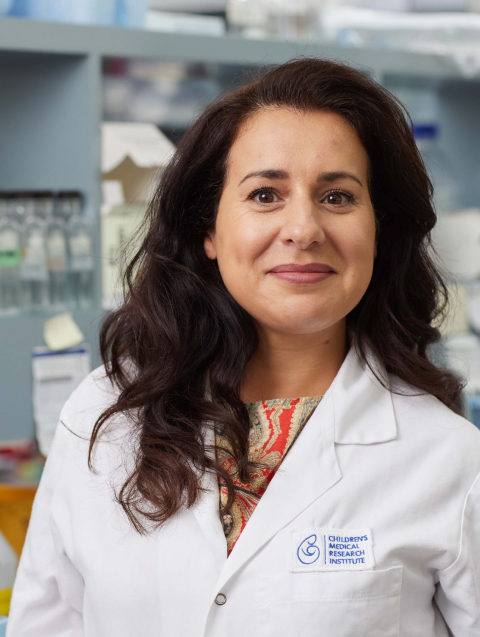Project Aim
The purpose of The Australian Inherited Retinal Disease (IRD) Register and DNA Bank a is to establish and maintain a public and enduring Australian resource for use by approved scientists and clinicians embarking on inherited retinal disease research, including those undertaking clinical trials and (in the future) offering therapies.
The resource consists of:
- a register of consenting Australians affected with an IRD and their family members, and
- a DNA bank containing DNA from consenting individuals.
Information within the register includes detailed results of electrophysiology tests, psychophysical measurements and ophthalmic examinations, demographic information, family and clinical data, and details of genetic analyses undertaken and genetic information gathered, including the defect causing the disease within each family where this has been established.
Project Results and Impact
- For the one year period August 2015 to August 2016 the number of subjects for whom information has been recorded in the register has increased from 6708 to 7376, an increase of 668 subjects.
- The number of DNA samples stored has risen from 5084 to 5543, an increase of 459 samples. The rate of recruitment and DNA collection remains steady.
- Included in the figures are DNA samples stored for 95 non-related individuals with no known family history of retinal disease, and deemed normal following ophthalmic and electrophysiology testing. This DNA is used as control DNA.
- 31% of all DNA has been collected from Western Australians. DNA has been being collected from Western Australians since 2001, and the DNA bank became a national resource in 2009. A long-term goal of this project is to have each of the states and territories represented on a population basis to at least the level at which Western Australia is currently represented.
- Since the last annual report, 486 DNA samples have been sent to external providers for genetic analysis. Of these, 441 were sent to Casey Eye Institute, Oregon, USA (CEI) and 38 to the Australian Genome Research Facility (AGRF).
- Of all the DNA samples dispatched for analysis in the past 12 months, we have received results for 290 of them. Once genetic analysis results are received, assessments have to be made with respect to the variants identified by the genetic analysis laboratory in order to determine which of them are likely to be disease causing for each individual. This is an extremely labour intensive process and is primarily where most of our focus has been this year.
- We have established 749 confirmed or likely disease causing variants across 154 different retinal dystrophy genes. It is important to note that a number of such variants are often detected within a single individual. One or more of these will not necessarily be the primary cause for that individual’s disease, but may in some way affect the manifestation and progression of disease symptoms and therefore also clinical treatment windows.
- Since the last annual report (August 2015) we have provided 128 detailed genetic analysis reports to participants’ nominated genetic counselling services or ophthalmologists (with the participants’ written consent). This brings the total number of genetic research reports provided by this resource to 407.
Published peer reviews
- Huynh E, De Roach J, McLaren T, Montgomery H, Kap C, Hoffmann L, Lamey T. (2016) A method for automation of variant pathogenicity assessment from the literature followed by automated production of patient molecular genetics reports. Australasian Physical and Engineering Sciences in Medicine. March 2016;39(1):239-245.
- Chiang J, Lamey T, McLaren T, Thompson J, Montgomery H, De Roach J. (2015) Progress and prospects of NGS testing for retinal dystrophy. Expert Review of Molecular Diagnostics 2015;15(10):1269-75.
- McLaren T, De Roach J, Montgomery H, Hoffmann L, Kap C, Lamey T. (2015) Genetic analysis of choroideremia families in the Australian population. Clinical and Experimental Ophthalmology 2015;43(8):727-34.
- Rose L, Staffieri S, De Roach J, McLaren T, Mackey D, Hewitt A, Lamey T. (2015) Molecular and clinical characterisation of females affected by X-linked retinoschisis Clinical and Experimental Ophthalmology 2015;43(7):643-7.
- Crowley C, Paterson R, Lamey T, McLaren T, De Roach J, Chelva E, Khan J. Autosomal recessive bestrophinopathy associated with angle-closure glaucoma Documenta Ophthalmolica. 2014;129(1):57–63.

Chief investigator:
Dr Tina Lamey
Australian Inherited Retinal Diseases Register and DNA Bank, Perth
Co-investigator/s:
Ms Terri McLaren, Australian Inherited Retinal Diseases Register and DNA Bank, Perth
Dr John De Roach, Australian Inherited Retinal Diseases Register and DNA Bank, Perth
Grant awarded:
$110,000 (2016)
Research Impact Reports
Virtual Reality Assessment of Functional Vision in achromatopsia
Project Aim This project aimed to develop and validate a virtual reality (VR) mobility task...
Advancing Usher syndrome type 1B gene therapy with split intein
Project Aim Usher syndrome is the leading cause of combined hearing and vision loss worldwide....
Therapies for currently untreatable autosomal recessive IRDs
Project Aim This project aims to develop gene replacement therapies for autosomal recessive (AR) inherited...
Establishing novel AAV gene editing for Usher Syndrome
Project Aim The aim of this project was to establish proof-of-concept for a new type...




